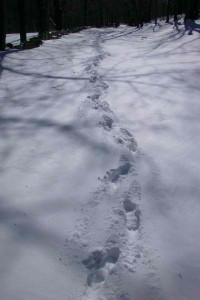The Backstory
In a few days you will get to read the next installment in the Captains Curious series, which was written by creativity expert Connie Harryman. Connie and I became friends through our mutual involvement in an online community for Organization Development professionals, and we both serve on the Operations Team (the board) for this community.
Last night in our semi-monthly board meeting, Connie mentioned to the group that she had written a guest post for my blog, and she told the group that this was really a success for the community. It demonstrates the benefits of being an active participant in a community: We would never have met, much less become colleagues and friends, were it not for our active involvement with this group.
The Question
This got me thinking about communities (one of my favorite subjects). In particular, it got me thinking about them in a new way, with a question: What is “success” for a community?
I started thinking about the communities of which I am a part: Various online communities, two Master Mind groups, two business networking groups, a local community of coaches, the community of people who volunteer for the Sandra J. Wing Healing Therapies Foundation, the community in which I live, various circles of friends, and my extended family. How would I gauge the “success” of each of those?
The Real Question
This raises a core question: How do we define “community?” This is a question I have been investigating for a couple of years.[1] Different people define “community” differently, but one consistent thread is that community members have something in common. In addition, communities often have a shared purpose.
So a Community Is Successful When…
So, it seems to me, one could assert that a community is “successful” to the extent that it achieves the goals that arise from that purpose, to the extent that it is true to its purpose.
In the case of the Global Brain Trust (see the first paragraph), part of its purpose is to help organization development professionals to connect, share knowledge and collaborate. Since it was the platform that allowed Connie and I to do that, her guest post for my blog is indeed a success for the community.
Surprise Benefits
This has me thinking about my other communities, and their purposes, and the extent to which they are “successful.” Which also has me thinking about the benefits of membership in a community, and how sometimes those benefits aren’t part of the stated purpose.
For example, the purpose of the Sandra J. Wing Healing Therapies Foundation is to provide financial grants to cancer patients who are going through traditional treatments, so that they can pay for healing therapies that help them cope with the effects of those treatments (therapies that usually are not covered by insurance). Those of us who are part of the community of volunteers know that we are helping to achieve this purpose, and the higher purpose of making life better for cancer patients and their families. But there is another benefit, which I can’t really say is part of the purpose, but it certainly contributes to my desire to be a part of this community: I get to hang around and work with some of the most amazing, extraordinary people. And I have to say that is true for most of the other communities I choose to be a part of.
The surprise benefits, like that one, that come out of my participation in my various communities are the “secret destinations” in one of my favorite quotes:
“All journeys have secret destinations of which the traveler is unaware.” – Martin Buber
The Purpose May Change
Sometimes the purpose may expand, or it may shift.
For example, one of the mastermind groups I participate in was formed by local people who had attended Marcia Wieder’s Become an Inspiring Speaker[2] program last fall. The initial purpose was to give us a forum to support one another in continuing to expand our skills as Speakers. Over time, the number of members shrank but the purpose expanded to include supporting one another in a variety of ways as we build our businesses. (And we have become very close.)
Although we tend to think of communities as being stable and grounded, they are not; they evolve, people come and go, and we are all fellow travelers in the best sense of the word.
Which leads me to another thought: Perhaps one higher purpose of all communities is to provide support of one kind or another to its members, and to facilitate support between members. It is this that makes it a community, not just a demographic.
Our Role
All of this has me thinking about my role in helping my communities to be successful. While some communities provide a safety net to members who cannot contribute, it is the mutual support and support of the community by its members that makes it possible for the community to support its members. A community is not a one-way channel to which its members are entitled.
So that’s what’s on my mind this morning: Gratitude to the people in the communities of which I am a part, and a reminder of the responsibility I share to help my communities – and the individuals in them – to thrive.
Questions for You
What communities are you a part of? What are their purposes? What benefits to do you receive – whether expected or unexpected? And how do you contribute to the health and success of your communities?
Back to Post [1] I have been interviewing people on this exact subject, so stay tuned. If you would like to help with the transcriptions, please contact me in the comments below or at susan at susantblake dot com.
Back to Post [2] Affiliate Link
To sign up for updates Click Here.
Image: xedos4 / FreeDigitalPhotos.net



 Twitter
Twitter LinkedIn
LinkedIn Facebook
Facebook